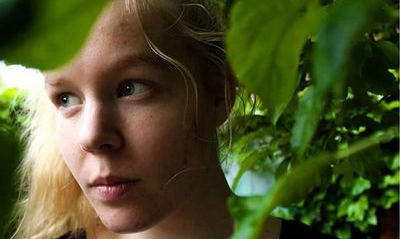After the announcement that a 17-year-old teenager was euthanized in the Netherlands on Thursday, denial bordering on relief soon circulated on the internet, and was very quickly relayed by the mainstream media. But Noa Pothoven, who had been traumatized by several rapes, was anorexic, depressed and had attempted suicide several times, was not euthanized. She had applied in 2017 to the Levenseindekliniek, an ‘end-of-life’ clinic in The Hague, but felt that she was “too young to die”. As the young woman explained in an interview with the newspaper De Gelderlander last December: “They think I should finish my trauma treatment and that my brain must first be fully developed”[1]. She had to wait until she was 21 years old, but did not want to.
During a recent hospital stay, the excessively underweight young woman was placed in an artificial coma to be fed intravenously. She no longer accepted any new treatment. She died on 2 June at the home of her parents, who had installed a hospital bed; she refused to be hydrated and fed. After she escaped euthanasia, should we really rejoice over this end?
In the Netherlands today, explained Constance de Bus – a lawyer and lecturer at the European Institute of Bioethics – “euthanasia is possible, including for psychological reasons, from the age of 12. Parental consent is required until the age of 16”. In 2017, 1% of euthanasia in the Netherlands was due to psychiatric disorders, and one person under the age of 18 was euthanized for this reason. For du Bus, the following question arises: what is “the Netherlands currently providing for physically and mentally abused people?” At the very least, care seems to have been inadequate or inappropriate. Noa, who was treated in many different establishments, had written in her autobiography about the horrendous hospital stays and involuntary treatment she underwent. As a victim, she recounted that she “felt almost like a criminal,” even though she had “not even stolen a single sweet in her life”.
Furthermore, “what can we do for someone who no longer wants to eat and drink?” du Bus asked. In the name of patient autonomy, should we agree to let a teenage girl die of hunger and thirst? Surely autonomy is part of resignation in the face of illness and reinforces failure to assist a person in danger? “Today,” noted du Bus, “every issue surrounding the question of death is blurred. What benchmarks are there to say when a person is at the end of their life? Where do we draw the line between natural death and sedation, or between suicide and euthanasia?” What real autonomy is there in the face of death when a person is no longer in a fit state to decide for themselves?
Noa’s parents explained that their daughter did not want to die; she simply did not want to suffer any more. “There is a growing belief today that death ends suffering, and especially that it is the only way to relieve suffering,” said du Bus. In a country marked by individualism, what kind of solidarity can we still provide? “We are beings made for relationships. How was this teenage girl viewed?” asked du Bus. Noa’s death must remain a question for everyone: what have we done with the social contract that used to unite the living?
[1] The Guardian: Dutch girl was not ‘legally euthanised’ and died at home

